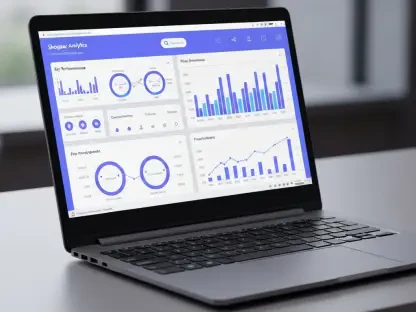In the rapidly evolving world of media and digital advertising, understanding data and analytics has become crucial. Today, we have Zainab Hussain, whose expertise in e-commerce and customer engagement provides valuable insights into these challenges. We’re focusing on Operative’s new offering, AOS Insights, which aims to revolutionize how media companies handle their data.
What motivated Operative to develop and launch AOS Insights?
The increasing complexity of the media landscape has made it essential for companies to harness data effectively. By launching AOS Insights, Operative aims to provide media organizations with the tools needed to streamline their data management and uncover revenue-driving insights seamlessly integrated into their daily operations.
Can you explain the challenges media organizations face with fragmented channel portfolios and disparate data systems?
Media companies deal with a wide array of channels, each with its own data system, making it difficult to consolidate and analyze information effectively. This fragmentation can lead to inefficiencies and missed revenue opportunities as organizations struggle to synthesize data from various sources into actionable insights.
How does AOS Insights address these challenges, and what differentiates it from legacy reporting tools?
AOS Insights provides a unified intelligence layer, bringing modern BI and analytics directly into the AOS interface. Unlike traditional reporting tools, it offers real-time data visibility and customization, enabling faster, data-driven decisions. This integration helps break down silos and allows for more streamlined operations.
Could you describe the role of embedded interactive visualizations in AOS Insights?
The interactive visualizations are crucial as they allow users to see data representations in a way that is immediately understandable. This feature makes it possible to spot trends and anomalies at a glance, providing a more engaging and efficient way to digest complex data.
How can media companies benefit from the transition to AOS Insights in terms of cost savings and operational efficiencies?
Transitioning to AOS Insights reduces the reliance on multiple disparate tools, which not only lowers costs but also minimizes the complexity of data operations. This streamlined approach enables quicker time-to-insight and reduces overhead related to manual data management tasks.
What is the significance of having a unified intelligence layer within the AOS interface?
Having a unified intelligence layer is significant because it centralizes data processing and decision-making into a single platform. This allows teams to work more cohesively and make consistent, informed decisions without the need to switch between multiple systems.
How is AOS Insights integrated into the existing AOS platform?
AOS Insights is seamlessly embedded into the existing AOS framework, ensuring that all data and analytics operations remain within a cohesive environment. This integration supports smooth workflow continuity and enhances the overall user experience without disrupting established processes.
Can you clarify what API-first, cloud-native architecture means in the context of AOS Insights?
API-first, cloud-native architecture means that AOS Insights is designed to be modular and scalable from inception, leveraging cloud technology to ensure flexibility and robust performance. This approach facilitates seamless data integration and processing across various applications and services.
How does AOS Insights leverage BigQuery and Looker, Google Cloud’s technologies, for data processing and insights?
AOS Insights employs BigQuery for efficient data ingestion and mapping, ensuring comprehensive data handling capabilities. Coupled with Looker’s BI solutions, it provides machine learning-powered insights, enabling proactive analysis and real-time information processing.
What are the key performance metrics that AOS Insights allows teams to track in real-time?
Teams can monitor metrics such as revenue visibility, sales pipeline movement, and delivery health in real-time. This allows for immediate assessment and adjustment of strategies, facilitating more agile and responsive business operations.
Can you explain the concept of self-service analytics within AOS Insights?
Self-service analytics empowers users to independently customize their reports and dashboards. This autonomy reduces reliance on IT departments and fosters a more dynamic and responsive analytical environment, allowing for instant exploration and deep dives into specific data sets.
How do machine learning-powered insights benefit media companies using AOS Insights?
Machine learning capabilities in AOS Insights enable the identification and prediction of trends and anomalies, supporting proactive decision-making. These insights empower media organizations to enhance strategies and anticipate market shifts more effectively.
In what ways can users customize reports and dashboards in AOS Insights?
Users can adjust filters, create tailored dashboards, and build reports that address specific business needs. This level of customization ensures that the information presented aligns perfectly with individual organizational goals and focuses.
What advantages does the automated report scheduling and distribution feature provide?
This feature saves time by automatically generating and distributing reports at scheduled intervals, ensuring stakeholders receive timely updates without manual intervention. It enhances consistency and reliability in data dissemination across teams.
What are the benefits of having bi-directional API flows between AOS modules?
Bi-directional API flows ensure data integrity and continuity by allowing seamless data exchange between AOS modules. This integration eliminates the need for manual data imports and exports, reducing errors and enhancing operational efficiency.
How does AOS Insights transform reporting from a reactive task to a proactive, data-driven experience?
By providing real-time insights and predictive analytics, AOS Insights shifts the focus from retrospective analysis to forward-thinking strategies. This proactive approach encourages continuous improvement and strategic foresight in business operations.
Do you have any advice for our readers?
In today’s data-driven world, leveraging advanced analytics is not just beneficial but necessary. Embrace tools like AOS Insights to break down data silos, optimize decision-making, and stay ahead in a competitive market by making informed, timely decisions.









